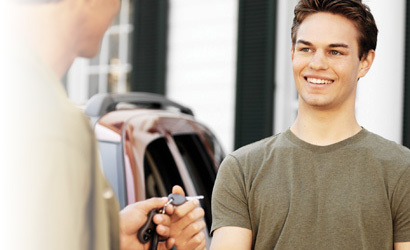
From the moment our children are born, we begin our life-long job of being their teachers. Most of us are the first to teach our kids to tie their shoes, ride a bike and read and write. Our role never ends, even when our children become teens and begin driving -- which as parents, is the most dangerous thing we will encourage our children to do.
This week is National Teen Driver Safety Week -- the perfect time to examine whether we are being good role models and teaching our teens the skills they need to be safe on the roads. New survey results from the National Safety Council show parents are starting to understand the importance of life-saving measures included in state teen driver laws, such as passenger and nighttime driving provisions. More than half of parents do not allow their teens to drive with friends or drive after 10 p.m. -- two of the riskiest things a new driver can do. But glaring gaps in parent education persist. Every time a teen dies on our roads, it is a stark reminder of how much we still need to do.
Inexperience leads to most teen crashes
Teens' crash risk is three times higher than more experienced drivers'. That risk decreases only when we spend thousands of miles and a few years behind the wheel. How did we learn how to safely merge into traffic, make a left turn, drive the right speed for conditions and gauge the gaps in traffic? The same way we learned how to tie our shoes, ride a bike, read and write: We practiced. It is through repetition that we build competency.
As we become proficient at a particular task, we often change our focus to technical details. This can be counterproductive when we're teaching a new skill. For example, many parents who struggle with parallel parking spend an extraordinary amount of time helping their teens learn to parallel park. Few -- if any -- teens have died trying to parallel park. Our teens need to actually drive, and they must practice in all kinds of situations -- in heavy traffic, on rural roads, around busy cities, and in the rain and the snow.
Understandably, we are reluctant to ask teens to drive in stressful or difficult conditions. But the only way to guarantee safety is to leave the car parked in the driveway. While we will never be able to eliminate risk, we can help teens understand how to handle it. When it comes to driving, the consequences of sub-par instruction are far more serious than falling off a bike and scraping a knee, or failing a math test.
The biggest safety risk could be your teen's best friend or sibling
Texting isn't the most common distraction for teen drivers. Recent studies have found adults use their cell phones while driving more often than teens. Young passengers are the most significant distraction a new teen driver faces.
A single young passenger increases a teen driver's fatal crash risk 44 percent. Three or more young passengers quadruples fatal crash risk. Despite these troubling statistics, we see young people pile into the same vehicle all the time.
NSC was pleased to find 57 percent of parents do not allow or encourage their teens to drive with friends. Unfortunately, 60 percent of parents allow their teens to drive younger siblings.
The death of a child is every parent's worst nightmare. Burying more than one is unthinkable. We must do more to help parents understand that their new teen driver is not a shuttle service for younger siblings. And we must talk to other parents about the dangers of teen carpools.
Being the effective teacher
We've been laying the foundation for our teens' driving habits for years. From the time our children turn around to face forward in their car seats, they've been watching us drive and studying our habits.
Have we been good role models?
In aviation, pilots often say, "train like you fly, and fly like you train." The same theory applies to teaching our teens to drive. We must be the driver we want our teens to be, and we must understand the risks they face so we can help them make it home safely.
Deborah A.P. Hersman is president and CEO of the National Safety Council and the former chairman of the National Transportation Safety Board.
